- Constellation aims to build an open environment around its network and encourages the community to participate.
- Solid community that is taking on open source initiatives like wallet buildout .
- Credible partnerships and collaborations.
·

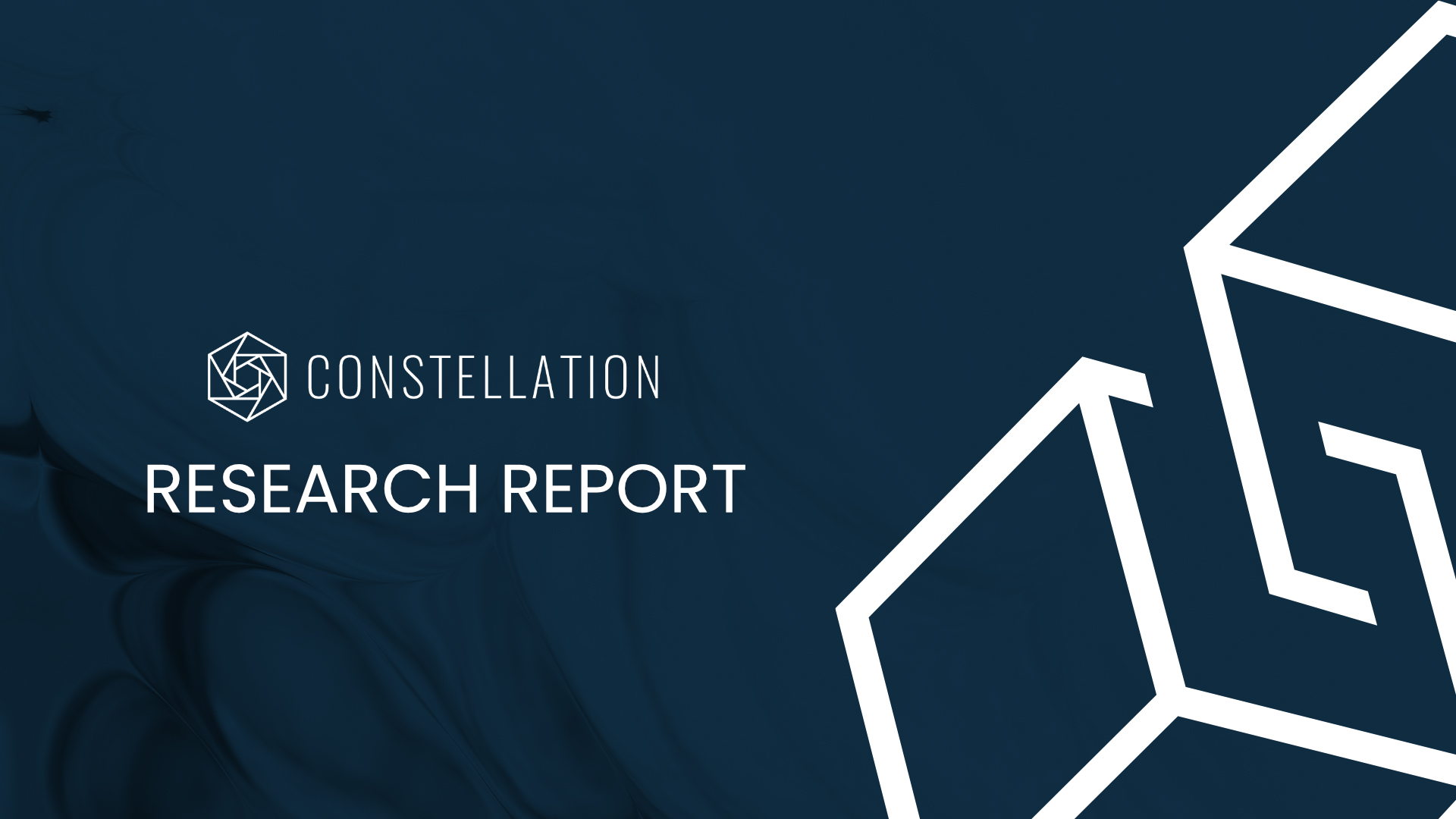

Lower ranks are better

·
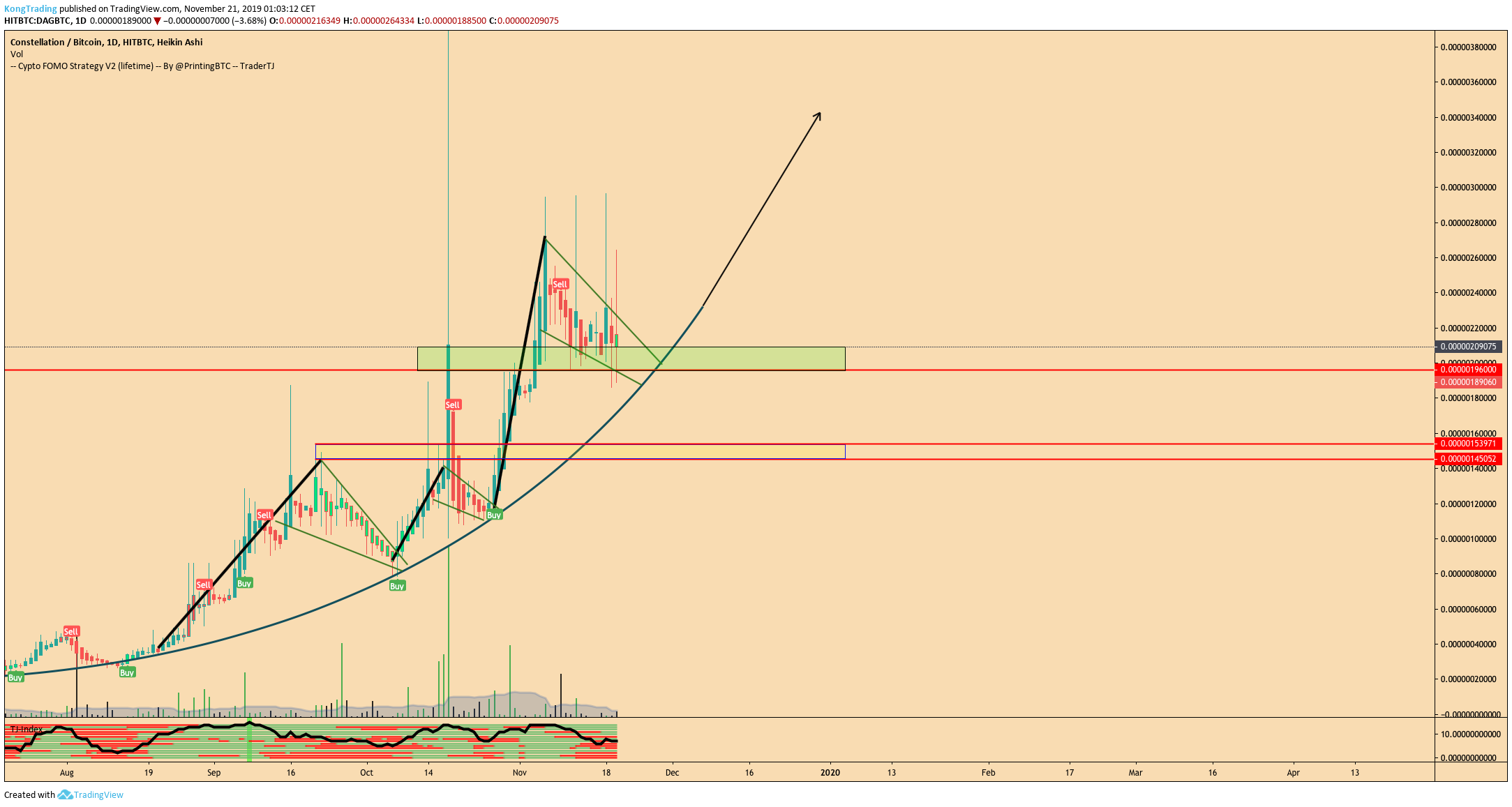
Technical Analysis by Kong Trading - 11/21/2019
Currently, on the 1Daily timeframe, we can see a parabolic uptrend, respecting its parabolic support and retracing very reliably to this support. This kind of market structure is one of the most profitable and most exciting to trade. The retraces are called parabolic advances, and usually, there is a count of 5 until the move is exhausted and the parabolic uptrend breaks down violently. Currently, once can count three self-explanatory ones and argue about one more in August. This still gives enough space for at least one more impulse move upwards.
To read the full Technical Analysis from Kong Trading click here.
The Constellation network is designed to allow the secure processing of data while guaranteeing data integrity and the possibility to audit the data trail – which is especially desirable for Big Data solutions. Data can be fed from devices, sensors, or any other data sources and allows enterprises or developers to integrate these data easily feeds into existing applications via APIs.
By implementing a new protocol based on the direct acyclic graph (DAG) technology and leveraging customizable state channels, Constellation makes the integration of distributed ledger technology for data sources into existing data pipelines seamless.
Constellation aims to become an open, permissionless, global network of nodes. As such, any computational entity, such as smartphones, IoT devices, or computers, can be part of the network – whether to provide data feeds or resources to the network.
The Constellation network will consist of an interconnected set of nodes that provide their unused resources either for computational power or storage capacity. Nodes can be any computation-capable device — from smartphones, IoT devices, computers, and laptops, to industry-scale servers. The main goal is to achieve a democratic, decentralized structure by making the threshold for node requirements as low as possible.
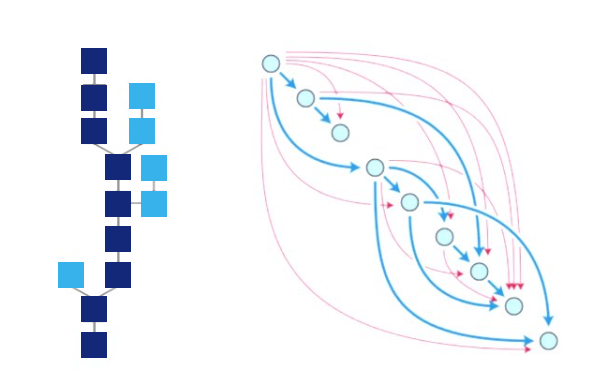
This is, in part, possible thanks to the distributed ledger protocol used by Constellation – the directed acyclic graph (DAG) architecture with a novel
reputation-based consensus. The direct acyclic graph is not a blockchain but is rather a transaction-based data structure.
In a DAG system, there are no miners and no blocks. Transactions are confirmed in a cascading manner, where a user confirms and validates the previous transaction of a nearby peer. IOTA is one of the more prominent projects using DAG in their Tangle technology stack.
The Constellation network aggregates the resources and bandwidth of the various connected devices, routing transactions efficiently using its partitioned DAG. At the base sits a probabilistic gossip protocol, enabling message-based transactions among nodes.
Opposite of blockchains, each transaction is not sent to all nodes in every round but instead propagated through nodes in immediate proximity. Each node collects data from different parts of the network, and after combining and signing, it is broadcasted to its neighbors.
The Constellation protocol relies on a P2P reputation system, called Proof of Reputable Observation (or also Proof-of-Meme). The reputation system in place aims to keep nodes honest and the network secure.
A node has three configurable dimensions — the computational power, the storage capacity, and the reputation. The computational power and storage capacity are configurable by the node itself, allowing users to choose their commitment to the network. The reputation of the node, on the other hand, is a network-imposed metric.
The main factor in determining the reputation of a node is its track record in contributing to the network. The reputation depends on an array of features, including their availability, loyalty to the network integrity, and history with the network.
Constellation associates a global reputation score to every node in the network. The score is calculated with a machine learning algorithm taking into consideration the node’s activity within the network. On top of that, each node can rate other nodes based on, on- and off-chain information. The node may choose to openly share their trust of other nodes to the network or not.
It is important to note that the consensus mechanism in Constellation does not trigger with each transaction. Instead, when a node finds a conflict in some data, a conflict resolution mechanism is triggered. When choosing between two pieces of conflicting data, the node takes into account the reputation scores of the nodes who observed and signed that data, thus providing a proof of reputable observation.
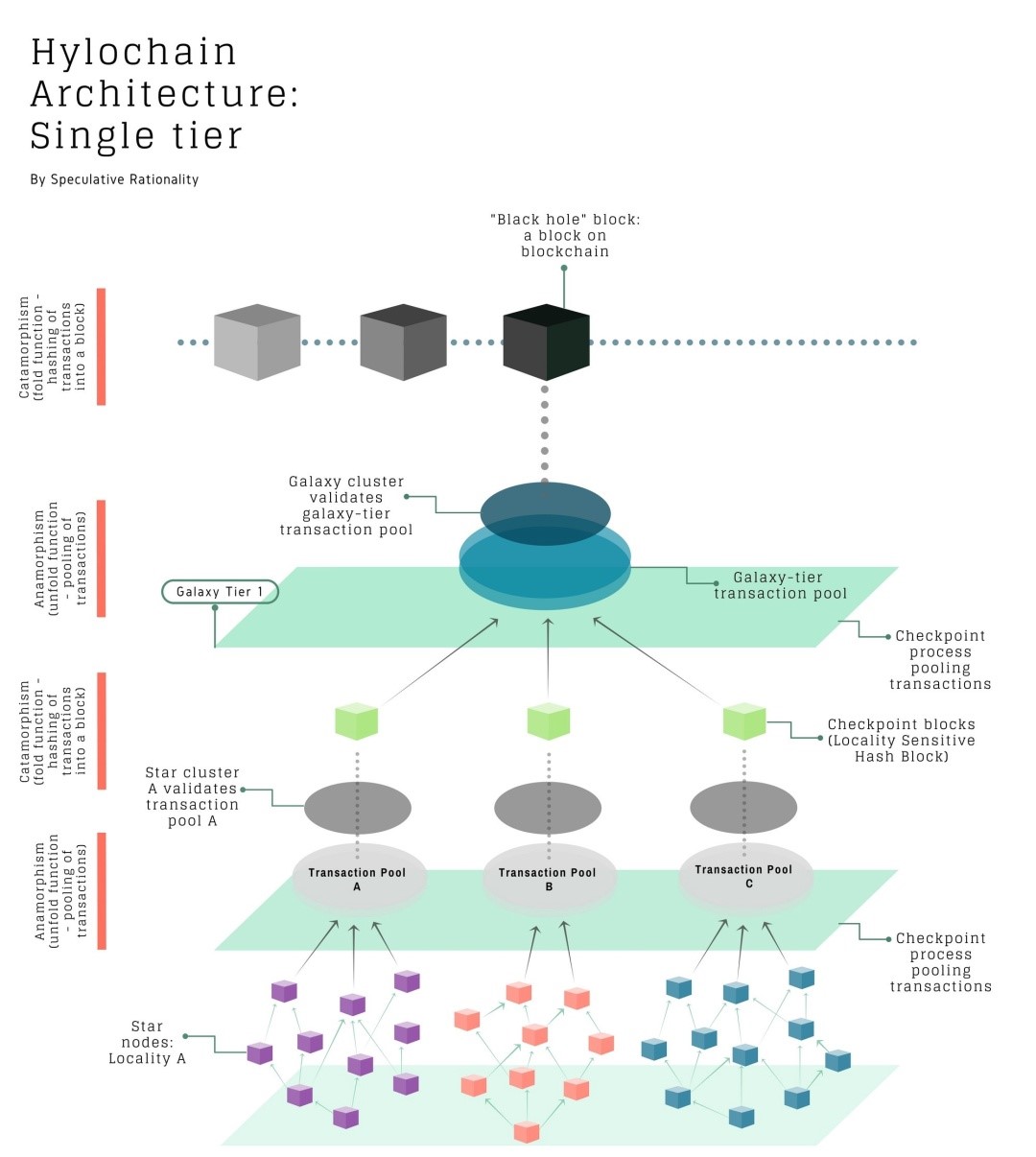 Constellation has a tiered peer-to-peer architecture to guarantee network stability and efficient capacity management, even when the network load is high. There is no central authority to verify the validity of transactions in Constellation — it is verified by a local neighborhood of nodes which then routes transactions through the most efficient topology on the network. Hylochain, as it is called, is broken down into four tier levels:
Constellation has a tiered peer-to-peer architecture to guarantee network stability and efficient capacity management, even when the network load is high. There is no central authority to verify the validity of transactions in Constellation — it is verified by a local neighborhood of nodes which then routes transactions through the most efficient topology on the network. Hylochain, as it is called, is broken down into four tier levels:
Stars (Light Nodes): A Star is the base component in constellation. It is any lightweight client interacting with the network and is natively compatible with mobile devices. To communicate directly with the network, users instantiate a star node on a device, and transactions are issued through this Star instance. Each Star contains a local chain that is composed of its past activity on the network.
Star Clusters: A Star Cluster is formed of Star nodes that choose to take part in consensus and are generally clustered based on locality. The cluster forms a hash block by agreeing on all transactions and the order in which they occurred within the transaction pool and hashing it into a locally-based hash block.
Galaxies (Full Nodes / Foundation Nodes): Galaxies act like validators and have the power to remove invalid transactions, as well as decide on delegates in Star Clusters. The Galaxy nodes rely on node reputation scores to establish the validity of transactions. As Stars reach a threshold of reputation, they may earn the right to function as Galaxy nodes.
Black Holes: Black Holes are blocks of hashed locality-sensitive hash blocks. It is equivalent to refer to them as blocks in a blockchain.
Constellation utilizes dynamic topology that continuously updates the network consensus structure to be at its most efficient. In the simplest terms — the architecture developed by Constellation dynamically adjusts its structure between rounds of consensus to ensure efficient throughput and effective load-balancing of network resources. For example, if a particular cluster of nodes is currently overloaded, the network will adjust to find the path with the lowest data processing speed, even if it’s not the shortest path.
On the demand side, the Constellation network targets anyone who wants to build data-related applications – whether it’s individual developers, enterprises, or institutions.
Constellation’s DAG is built using the principles of functional programming and uses Scala and Java at its core. This makes it easy for application developers to immediately use much of the existing code in their technology stack within Constellation.
Constellation is built to be language-agnostic, allowing developers to create their application logic without relying on any specific language or platform-specific particularities. The applications can utilize the Constellation network through an accessible API, provided in multiple languages starting with Java, Scala, and Python.
Thus, developers can build not only a completely decentralized application on Constellation, but also, a traditional centralized application using components from Constellation’s API library for data integrity, redundancy, and cloud computing services.
Constellationaims to be an integration platform for decentralized applications. The Constellation network will provide a robust API for any application that may want to leverage the network of nodes for decentralized data integrity and computational tasks.
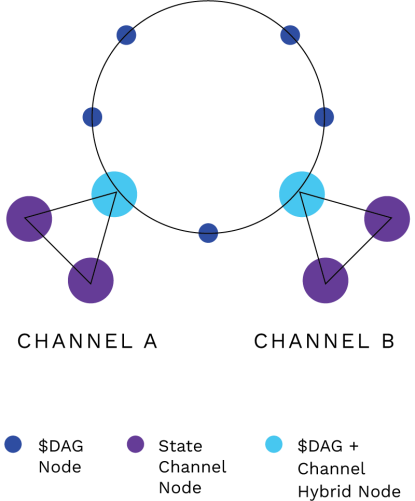
The Constellation network can be viewed as a collection of microservices – called “State Channels” – where each state channel validates specific data types with user-defined validation functions.
State channels form a distributed network architecture that allows a plug-and-play approach for real-world big data use cases. Developers can integrate state channels directly into existing applications, allowing for direct end-to-end interaction.
SPORE is an application gateway to Constellation’s security, data validation, and notarization across big data initiatives like artificial intelligence, enterprise software, or IoT.
The Spore platform bridges the functionality of the Constellation network to familiar data science stacks, providing insight into security, integrity, and state of data pipelines.
SPORE application interface uses functional programming techniques to verify the stateful composition of state channels, allowing for data mapping, management and streaming across state channels to be verified and validated. The platform can be integrated into existing big data tools, such as Kafka and Storm, at any step in the data pipeline.
Orion is a community portal that acts as a source of information for everything related to the Constellation ecosystem. The portal should contain developer documentation, support documentation, or bounty campaigns, and allows the Constellation team to interact with developers and community members.
Orion will be similar to a gateway and membership portal to the Constellation ecosystem. By staking $DAG tokens, token holders will be able to gain membership access to the portal on two levels, Community (250 $DAG) and Developer (1000 $DAG). A free membership tier is also available.
Orion is a tool to help the Constellation network operate in a decentralized manner in the future. The Constellation core team will curate the network while allowing the community to help shape, build, and grow the ecosystem.
Over time, the Orion portal will become the Constellation Application Marketplace where Developers will be able to monetize applications and services that they build on Constellation.
While the portal seems to have been launched in 2018, it is currently offline.
Last Update 11/12/2019
The architecture of Constellation makes it, so all transactions are fee-less. Therefore, the token DAG can be viewed as a financial state channel on the network. With the help of DAG users can exchange data and interact with other state channels, as well as tap into the bandwidth and resources provided by the nodes of the network.
DAG can be viewed as tokenized throughput or bandwidth on the network. While basic functionality is fee-less and allows users to send single transactions for one-off P2P payments – for more complex data processing or data exchange processes, throughput can be acquired with the token.
DAG is currently available as an ERC-20 token, since the Constellation network mainnet hasn’t been launched yet. - UPDATE: Check out "Constellation Mainnet and Token Swap" article.
Last Update 11/12/2019
The Constellation team created an array of documentation, as well as launched the Orion portal in 2018; however, as of this writing, there is no publicly available product, portal or interface that is usable. If there is any minimum viable product, then it can only be accessed by directly contacting the team.
They had a network visualizer for the closed testnet & have a video showcasing the live GPS lat/long notarization of data on the testnet while in a car. In the demo, you can see Constellation integrated on a custom Android Application that is sending a real-time feed of location data to the Constellation Network. Visualization shows the data being appended to DAG ledger, creating a provable and auditable source of location truth that can be queried at any time. You can watch the full video here.
Last Update 10/26/2019
There are several other projects that build on the direct acyclic graph structure and want to address at least one segment of the data market. Most notable competition is:




More Team Members and Advisors can be found here.
The Constellation team seems to be behind the roadmap that was initially laid out. The mainnet was scheduled to roll out in September – October 2019, which was now pushed to Q4 of 2019 according to the latest roadmap. There was a campaign for white-listing possible node operators for the private testnet, but there is no sign of a launch for the mainnet yet. Details on the roadmap and previous milestones can be found here.
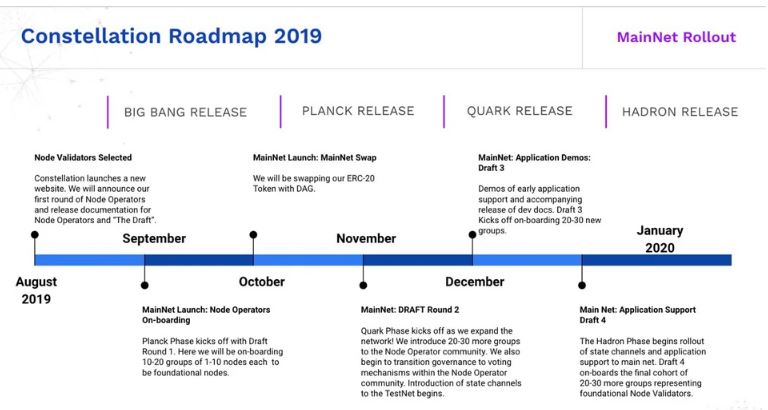
Mainnet Provate v1
Parachain (crosschain) Support
Higher rank partitioning
Scability and Performance
Generic APP Support
Mainnet: Public Protocol Deployment
Reputation exchanged for $DAG Public and Open network
The Constellation token sale was open to Accredited Investors, Funds, and Institutional Investors in January 2018. A hard cap of $33.7M was reached and a total of 730,124,835 tokens were sold, of which 566,163,826 were liquid at the token generation event. Tokens allocated to advisors, partners and discounted tokens have a vesting schedule until 1 June 2020 with monthly releases. There is no information about how many tokens are released each month. The team also burned 288,000,000 tokens from private allocations, representing 7.2% of total supply in order to show the commitment of the team to long-term development. You can find more information about the vesting schedule here.
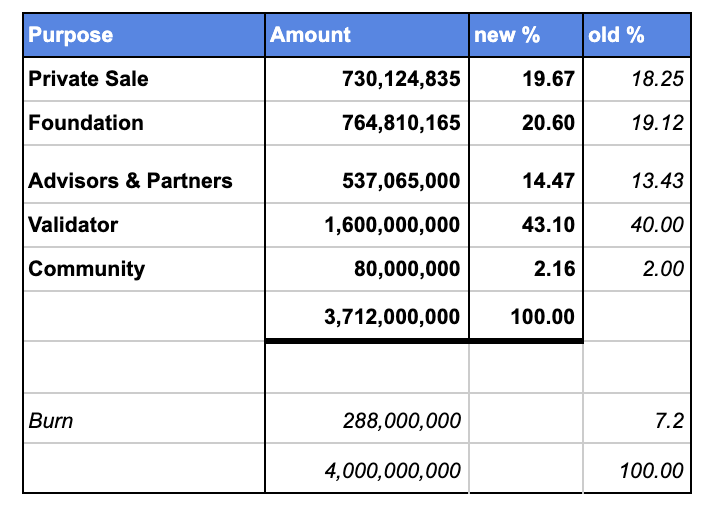
Revised token structure after Founder token burn as stated on July 4 2019 article here
The Foundation tokens are not locked up, but the team asserts that these will remain illiquid.
You can keep track of wallet addresses related to foundation, advisors - partners, private sale and their current balances here:
| Address | Current Amount as of 11/25/2019 | Remarks | |
| Validator | 0x0EeF872B21cf4cfF3d793731CaEE6512211458F4 | 1,600,000,000.00 DAG | 10 years from Mainnet start |
| Community | 0xf38dDe18b63406a5815d1584334b68BafAbB696F | 52,554,931.00 DAG | Distributed when needed |
| Advisor & Partners | 0x4231F1557bc0ad3D810E45AC35fBb3287FF2Cb53 | 101,268,163.05 DAG | Vesting June 1 2020 with monthly release |
| Private Sale | 0x6120eF25715232Ed048eA8e59103a87ae95839bA | 266,871,880.03 DAG | Vesting June 1 2020 with monthly release |
| Foundation | 0x786bde4504f9ea2Df104f593f056CD6e1A11C20a | 32,526,146.01 DAG | Promise to keep Illiquid |
| Foundation | 0x103B0055475A758a2b1A232aA734A4Ae0D776b06 | 501,607,623.75 DAG | Promise to keep Illiquid |
Last Update 11/25/2019
In order to incentivize nodes to contribute their resources to the network, the protocol rewards their contribution with DAG tokens. The total supply reserved for node rewards is 1.6 billion.
Half of all these tokens will be distributed within the first period of 2.5 years. The node reward allocation halves for each successive 2.5 year period. This means early contributors who take the resource risk in contributing to the network get higher rewards than late comers with less resource risk.
Rewards in $DAG are distributed by the protocol at the end of each finality window (snapshot) in relation to the node tier and reputation score of a node. The rewards are located in the specifically assigned validator rewards wallet.
Wallet address for validator rewards: 0x0EeF872B21cf4cfF3d793731CaEE6512211458F4 / 1,600,000,000.00 DAG
Constellation will launch its network in a permissioned way with 100 nodes selected manually by the team. In order to run a foundation level node a minimum of 250,000 DAG is needed.
Considering that the Constellation ecosystem for data economy will take some time and development to be fully implemented, Constellation will act as the intermediary for enterprise clients.
Since many enterprises will be reluctant to deal with cryptocurrencies, Constellation plans to provide these services as a commercial entity. Constellation will host the nodes and charge enterprise clients in a SaaS model fashion with a throughput guarantee. Constellation will burn 10,000,000 $DAG for each partnership that is on-boarded on the network regardless of contract size or current market value of DAG.
The tokens will be sent to the burn address at 0x0704201907042019070420190704201907042019 / 288,001,309.64 DAG
Also, read about "Founder Token Burn" announcement here.
Constellation Network signed a working contract with the United States Air Force (USAF). The contract is part of the USAF SBIR Phase I program that provides the rails to a solution fully integrated with Air Force constituents.
Chainlink is a decentralized oracle network that enables smart contracts to securely access off-chain data feeds, web APIs, and traditional bank payments.
Last Update 10/26/2019
The Constellation GitHub has 12 repositories and one person contributing to it. The documentation is well-curated on GitHub, and the main repository has a consistent commit frequency over the past year.
The Constellation’s social presence is relatively healthy, with 10 300 members in the Telegram community channel and 15 600 followers on Twitter. The project’s presence on Discord is relatively weak with few users online.
https://github.com/Constellation-Labs/whitepaper-business
https://github.com/Constellation-Labs/awesome-constellation
https://github.com/Constellation-Labs/Light-Paper/blob/master/Constellation_Light_Paper.pdf
https://constellationlabs.io/how-constellation-is-different-than-blockchain/
NO INVESTMENT ADVICE
The content is for informational purposes only. You should not construe any such information or other material as legal, tax, investment, financial, or other advice. Nothing contained on our Site constitutes a solicitation, recommendation, endorsement, or offer by Upblock or any third party service provider to buy or sell any cryptocurrencies (also called digital or virtual currencies, crypto assets, altcoins and so on).
DO YOUR OWN RESEARCH
Our content is intended to be used and must be used for informational purposes only. It is essential to do your own analysis before making any investment based on your circumstances. You should take independent financial advice from a professional in connection with or independently research and verify any information that you find on our website and wish to rely upon, whether to make an investment decision or otherwise.